ST's BlueNRG-1 is a very low-power Bluetooth low-power (BLE) single-mode system-on-a-chip (SoC) that includes 160KB of programmable flash memory, 24KB of static RAM memory, and SPI, UART, and I2C standard communication interfaces. Multi-function timers, watchdogs, RTC and DMA controllers, etc. Operating voltages 1.7-3.6 V, mainly used in automotive output rates, watches, health and fitness equipment, consumer medical output, remote control, home and industrial automation , mobile phone peripherals, lighting and PC peripherals. This article introduces the main features of BlueNRG-1, architecture block diagram, RF software block diagram, evaluation platform STEVAL-IDB007V1 main features, circuit diagram and bill of materials.
The BlueNRG-1 is a very low power Bluetooth low energy (BLE) single-mode system-on-chip, compliant with Bluetooth specificaTIon.
The BlueNRG-1 extends the features of award-winning BlueNRG network processor, enabling the usage of the embedded Cortex M0 for running the user applicaTIon code.
The BlueNRG-1 includes 160 KB of programming Flash memory, 24 KB of staTIc RAM memory with retenTIon (two 12 KB banks) and SPI, UART, I2C standard communication interface peripherals. It also features multifunction timers, watchdog, RTC and DMA controller.
An ADC is available for interfacing with analog sensors, and for reading the measurement of the integrated battery monitor. A digital filter is available for processing a PDM stream.
The BlueNRG-1 offers the same excellent RF performance of the BlueNRG radio, and the integrated high efficiency DC/DC converter keeps the same ultra-low power characteristics, but the BlueNRG-1 improves the BlueNRG sleep mode current consumption allowing a further increase in The battery lifetime of the applications.
Main features of BlueNRG-1:
ï‚· Bluetooth specification compliant master, slave and multiple roles simultaneous, single-mode Bluetooth low energy system-on-chip
ï‚· Operating supply voltage: from 1.7 to 3.6 V
ï‚· Integrated linear regulator and DC-DC step-down converter
 Operating temperature range: -40 °C to 105 °C
ï‚· High performance, ultra-low power Cortex-M0 32-bit based architecture core
ï‚· Programmable 160 KB Flash
ï‚· 24 KB RAM with retention (two 12 KB banks)
ï‚· 1 x UART interface
ï‚· 1 x SPI interface
ï‚· 2 x I2C interface
ï‚· 14 or 15 GPIO
ï‚· 2 x multifunction timer
ï‚· 10-bit ADC
ï‚· Watchdog & RTC
ï‚· DMA controller
ï‚· PDM stream processor
ï‚· 16 or 32 MHz crystal oscillator
ï‚· 32 kHz crystal oscillator
ï‚· 32 kHz ring oscillator
ï‚· Battery voltage monitor and temperature sensor
ï‚· Up to +8 dBm available output power (at antenna connector)
ï‚· Excellent RF link budget (up to 96 dB)
ï‚· Accurate RSSI to allow power control
ï‚· 8.2 mA maximum TX current (@ 0 dBm, 3.0 V)
 Down to 1 μA current consumption with active BLE stack (sleep mode)
ï‚· Compliant with the following radio frequency regulations: ETSI EN 300 328, EN 300 440, FCC CFR47 Part 15, ARIB STD-T66
ï‚· Pre-programmed bootloader via UART
ï‚· QFN32, WCSP34 package option
ï‚· Dedicated wettable flank QFN package for automotive grade qualification
BlueNRG-1 application:
ï‚· Automotive product
ï‚· Watches
ï‚· Fitness, wellness and sports
ï‚· Consumer medical
ï‚· Security/proximity
ï‚· Remote control
ï‚· Home and industrial automation
ï‚· Assisted living
ï‚· Mobile phone peripherals
ï‚· Lighting
ï‚· PC peripherals
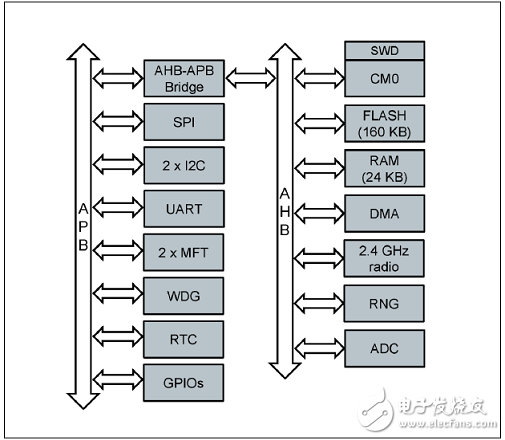
Figure 1. BlueNRG-1 architecture block diagram
The BlueNRG-1 is complemented with a Bluetooth low energy stack C library that provides:
ï‚· Master, slave role support
ï‚· GAP: central, peripheral, observer or broadcaster roles
ï‚· ATT/GATT: client and server
ï‚· SM: privacy, authentication and authorization.
ï‚· L2CAP
ï‚· Link Layer: AES-128 encryption and decryption
The BlueNRG-1 can be configured for supporting Single Chip or Network processor applications.
In the first configuration, the BlueNRG-1 operates as a single device in the application for managing both the application code and the Bluetooth low energy stack. The whole Bluetooth low energy stack is provided as object code in a single library file where the GATT low energy Profiles are provided as object codes in separate libraries.
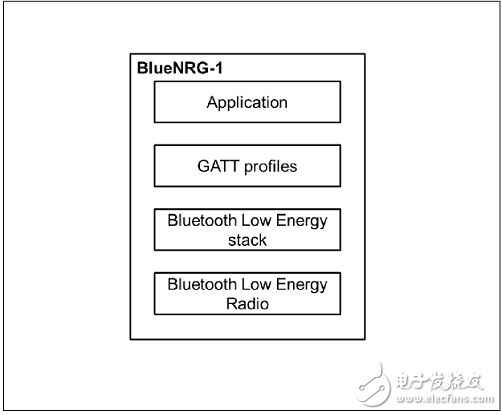
Figure 2. BlueNRG-1 Monolithic RF Software Layer Diagram
The Blue NRG-1 can be configured for operating as a network coprocessor. In this case a dedicated firmware is provided for supporting the interface with an external application processor. The whole Bluetooth Low energy stack runs in the BlueNRG-1; the GATT profiles are provided For running in the application processor together with the application code.
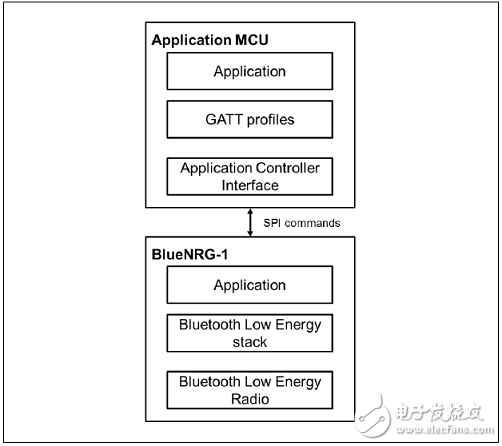
Figure 3. BlueNRG-1 network processor RF software layer diagram
The BlueNRG-1 integrates the blocks listed below:
ï‚· Cortex M0 core
ï‚· Interrupts management
ï‚· 160 KB Flash memory
ï‚· 24 KB of RAM with two retention options (12 KB or 24 KB)
ï‚· Power management
ï‚· Clocks
ï‚· Bluetooth low energy radio
ï‚· Random number generator (RNG) (it is reserved to Bluetooth low energy protocol stack, but user application can read it)
ï‚· Public Key Cryptography (PKA) (reserved to Bluetooth low energy protocol stack)
ï‚· Peripherals:
SPI SPI interface
UART UART interface
ï€ I2C bus interface
ï€ GPIO
ï€ Multifunction timer
DMA DMA controller
ï€ Watchdog
ï€ RTC
ï€ ADC with battery indicator
ï€ PDM stream processor
BlueNRG-1 Evaluation Platform STEVAL-IDB007V1
The STEVAL-IDB007V1 is an evaluation platform based on the BlueNRG-1, low power Bluetooth® smart system on chip, compliant with the Bluetooth® v4.1 specification and supporting master, slave and simultaneous master-and-slave roles.
The STEVAL-IDB007V1 also provides a set of hardware resources for implementing a wide range of application scenarios: sensor data (accelerometer, pressure and temperature sensor), remote control (buttons and LEDs) and manage debug messages though USB virtual COM.
Three power options are available (USB only, battery only, external power supply + USB) for high application development and testing flexibility.
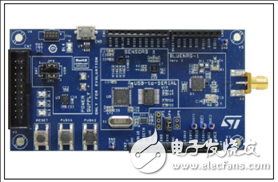
Figure 4. Outline drawing of the evaluation platform STEVAL-IDB007V1
Evaluation platform STEVAL-IDB007V1 main features:
 Bluetooth® SMART board based on the BlueNRG-1 Bluetooth low energy system on chip
ï‚· Associated BlueNRG-1 development kit SW package including firmware and documentation
ï‚· Up to +8 dBm available output power (at antenna connector)
ï‚· Excellent receiver sensitivity (-88 dBm)
ï‚· Very low power consumption: 7.7 mA RX and 8.2 mA TX at +0 dBm
 Bluetooth® low energy v4.1 compliant, supports master, slave and simultaneous master-and-slave roles
ï‚· Integrated balun which integrates a matching network and harmonics filter
ï‚· SMA connector for antenna or measuring equipment
ï‚· 3 user LEDs
ï‚· 2 user buttons
ï‚· 3D digital accelerometer and 3D digital gyroscope
ï‚· MEMS pressure sensor with embedded temperature sensor
ï‚· Battery holder
ï‚· JTAG debug connector
ï‚· USB to serial bridge for providing I/O channel with the BlueNRG-1 device
ï‚· Jumper for measuring current for BlueNRG-1 only
ï‚· RoHS compliant
The evaluation platform STEVAL-IDB007V1 includes:
ï‚· 1 BlueNRG-1 development platform
ï‚· 1 2.4 GHz Bluetooth antenna
ï‚· 1 USB cable 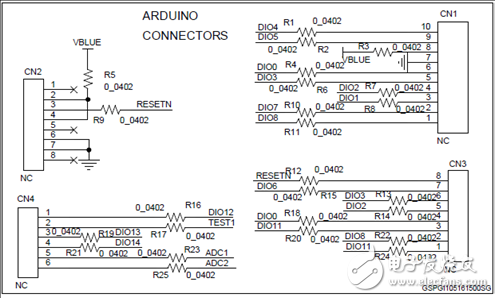
Figure 5. Circuit diagram of the evaluation platform STEVAL-IDB007V1: Arduino connector
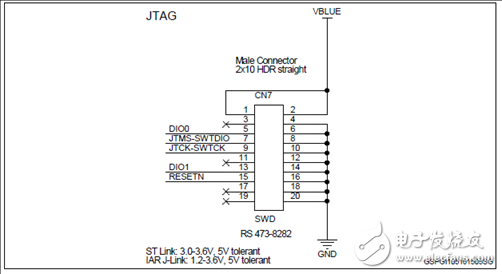
Figure 6. Circuit diagram of the evaluation platform STEVAL-IDB007V1: JTAG
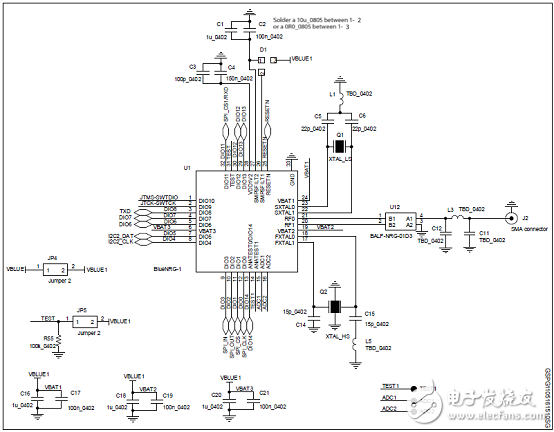
Figure 7. Circuit diagram of the evaluation platform STEVAL-IDB007V1: BlueNRG-1
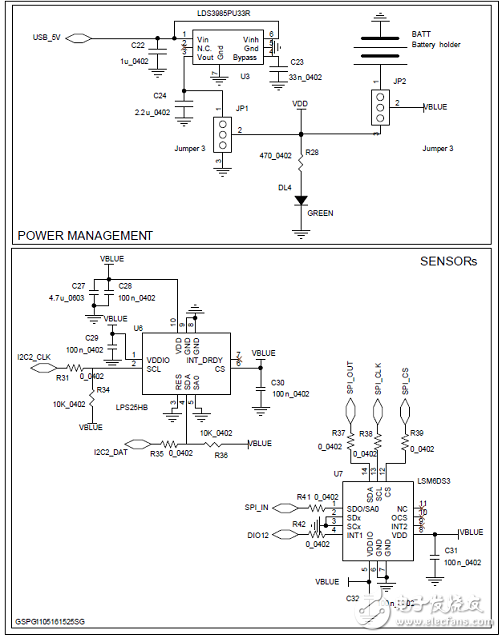
Figure 8. Circuit diagram of the evaluation platform STEVAL-IDB007V1: power management, sensor
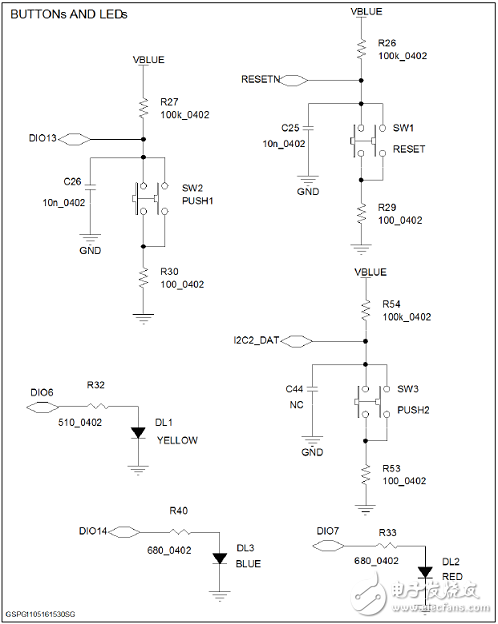
Figure 9. Circuit diagram of the evaluation platform STEVAL-IDB007V1: buttons and LEDs
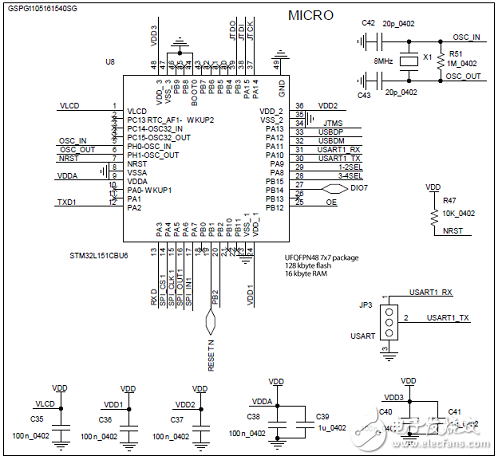
Figure 10. Circuit diagram of the evaluation platform STEVAL-IDB007V1: micro
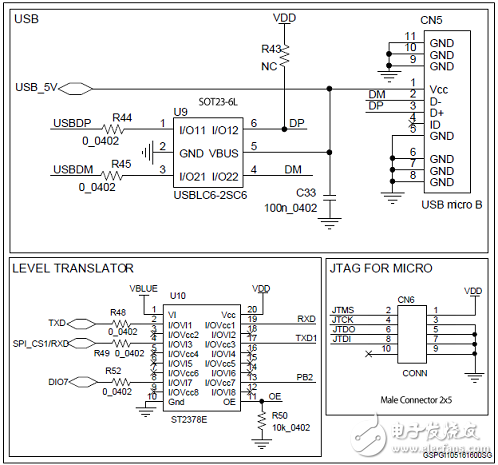
Figure 11. Circuit diagram of the evaluation platform STEVAL-IDB007V1: USB, level shifting, JTAG
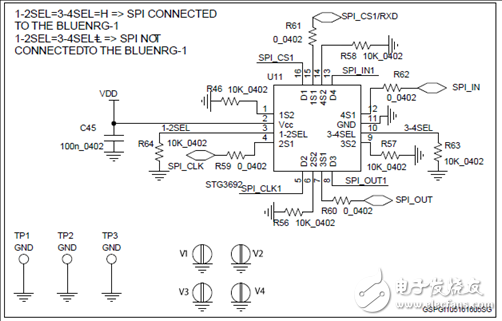
Figure 12. Circuit diagram of the evaluation platform STEVAL-IDB007V1: EEPROM
Evaluation Platform STEVAL-IDB007V1 Bill of Materials:
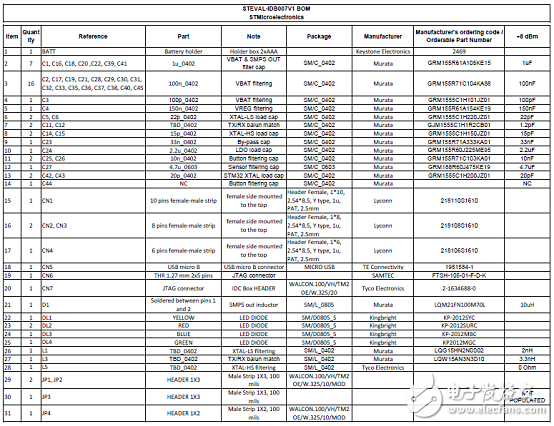

Saintish foldable Solar Panel kits are perfect for outdoor living. Users can recharge electronics directly or to charge batteries or solar generators.
While traveling or making storage when it is not in use, it is very important that the solar panels are light in weight and easy to carry, also should be compact enough for the transportation. Our portable solar panel kits of 100W are only 3.9KGS and 600*565*30mm in dimension.
Features:
- Upgraded module efficiency and portability.
- Weakened hot-spot effect, lower module failure rate and increased stability by shingle-tech.
- Optimized performance under low light conditions.
- Unique cell connection method lowers the internal resistance and ensures better performance than traditional connection with busbar.
- USB & DC outputs.
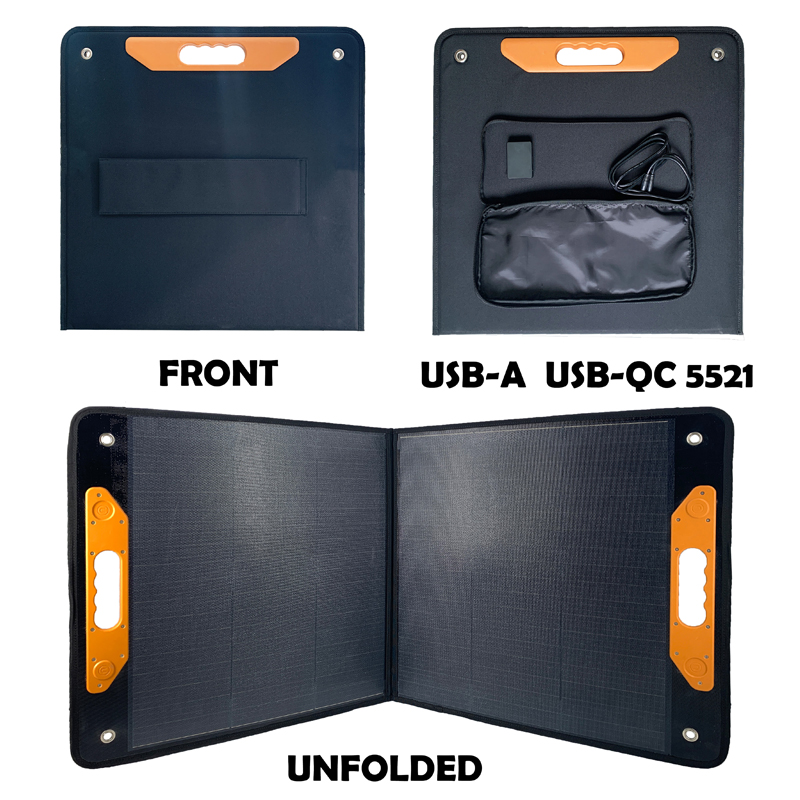
Foldable Solar Panels, Portable Solar Panels, 100W foldable solar panel kits, Folding Solar Panel, PV module
Hangzhou Saintish Technology Co.,Ltd. , https://www.saintishtech.com
![<?echo $_SERVER['SERVER_NAME'];?>](/template/twentyseventeen/skin/images/header.jpg)